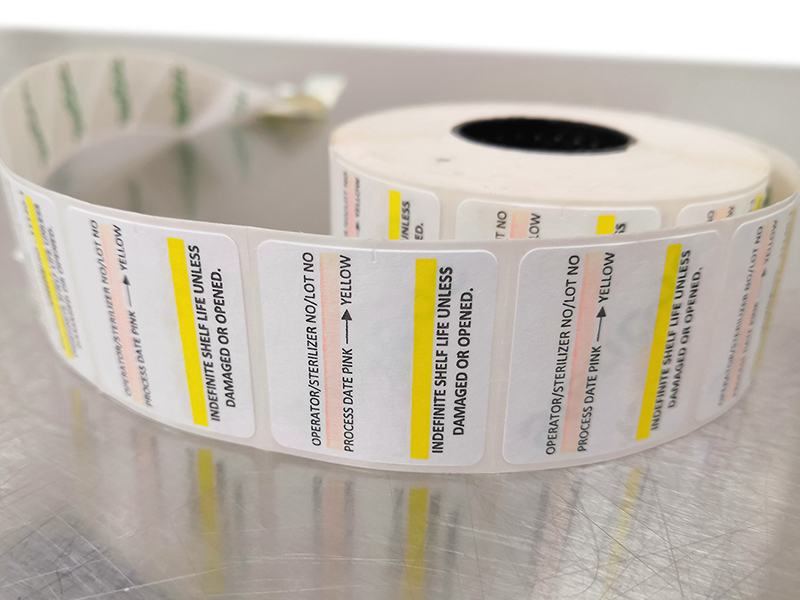
What is the outlook for labels and release liners over the next five years? In our exclusive interview with Ilkka Ylipoti, author of new report
The Future of Labels and Release Liners to 2028, he offers his expert insight into the opportunities and challenges that lie ahead. Ilkka is a consultant with extensive experience in the pressure sensitive labelstock and label printing industry.
How is the labels industry adapting to demands of wider industry pressures?
The demands and pressures addressed to the label industry are largely derived from environmental and sustainability concerns. Labels are a packaging product, as they usually surround various types of packaging. Recently, the focus has been on the volume, recyclability and reusability of packaging, and its “from cradle to grave” carbon footprint; consequentially, labels are affected, and this is of interest to consumers and governments alike.
The label industry has had to reflect on recyclability, reusability and carbon footprint, like many other packaging industries. Within this, the labels industry has had to consider downgauged materials, recyclable materials, raw materials with recycled contents, biodegradable and compostable labels and wash-off labels allowing the removal of the label from the container. Making labels smaller would be effective towards achieving the above objectives, but as labels convey the brand image of products, this decision is that of the brand owner.
There are also regulatory and market driven requirements and demands of the label industry, such as lists of ingredients and allergens, instructions on the use and disposal of the package, and requirements for multiple language versions. Most labels are secondary packaging materials, but some ends up on the product itself. In case of food products like fruit, where there is a chance of a direct contact between the product and label stock, ink and adhesive, all these components must be of so-called “food grade” standard. Raw materials free of allergen and hazardous chemicals have already been the norm, and the introduction of low migration inks further manifests these ambitions.
What is the impact of sustainability on the labels industry?
The ever-increasing consumer awareness as well as regulatory requirements based on environmental and sustainability issues, have impacted the label industry in a major way. Looking into the future, these challenges are growing. The new EU directive on packaging is still in preparation and will be potentially a factor requiring dramatic readjustment to the demands and requirements around sustainability; at least in Europe, which after all is one of the major label industry regions. The overall objective is to significantly reduce the volume of all packaging, but especially plastics, according to the initial proposal; and should be recyclable or reusable by 2030. This kind of requirement combined with EPR policies, throw a big challenge to the packaging and label industry. Similar requirements and policies will also be implemented in other regions than Europe, although their effectiveness without a comprehensive waste management infrastructure can be questioned.
What opportunities await the labels industry over the next five years?
To put it simply, the challenges are also the opportunities. If the label industry can answer to the overall requirements and objectives with practical and cost-effective solutions, the industry will prosper. For example, to allow clean recyclability, a label can be removed from a product by using a wash-off adhesive label that can come off in an alkaline bath. Wrap-around and shrink or stretch sleeve labels can be separated from the packaging material based on the density of the material in a flotation process after shredding. These types of properties are an advantage over non-label printed packaging.
Smart label applications offer great opportunities when it comes to logistics, interactive customer experience and retail management, meaning that there may be big opportunities in the emerging Internet-of Things (IoT) sector. Also, counterfeit products have raised big concerns lately, especially with pharmaceutical products; but smart labels and tamper-proof labels reduce the risks in this respect.
Another kind of opportunity is in the increasing general application of labelling technologies. Populous and developing nations have very low consumption of labels per capita. So, when an economy is growing with high population growth and urbanisation, there are shifts from wet markets to supermarkets that require packaged and labelled products. Changing lifestyles, increasing disposable income and similar changes offers a great opportunity for local operators.
What are the main threats the industry needs to be wary of going forward?
There are no severe threats to the industry itself, as long as it maintains its focus and innovates. In the 90s, flexible packaging took some market share from labels, but that trend has levelled out and may even be reversed due to the flexibility of labelling techniques considering the present sustainability requirements.
However, from a local point of view, some parties in the industry may face difficulties due to geopolitical circumstances such as the war between Russia and Ukraine, Brexit, and the US and China relation, with fluctuating exchange rates and growing protectionism in general.

 What is the outlook for labels and release liners over the next five years? In our exclusive interview with Ilkka Ylipoti, author of new report The Future of Labels and Release Liners to 2028, he offers his expert insight into the opportunities and challenges that lie ahead. Ilkka is a consultant with extensive experience in the pressure sensitive labelstock and label printing industry.
What is the outlook for labels and release liners over the next five years? In our exclusive interview with Ilkka Ylipoti, author of new report The Future of Labels and Release Liners to 2028, he offers his expert insight into the opportunities and challenges that lie ahead. Ilkka is a consultant with extensive experience in the pressure sensitive labelstock and label printing industry.